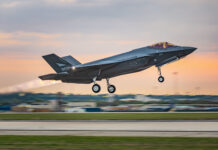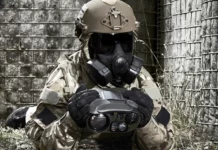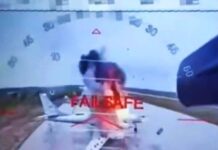
US DoD hails quality of Ukrainian NCOs
Peter Felstead
Ukraine’s investment in developing an effective non-commissioned officer (NCO) corps could be a decisive factor in defeating the country’s invasion by Russia, the US Department of Defense (DoD) noted in a news article released on the DoD website on 28 February 2023.
Cited in the article, Senior Enlisted Advisor to the Chairman of the US Joint Chiefs of Staff (SEAC) Ramón Colón-López said that, looking at a year of conflict in Ukraine since Russia invaded, he was convinced of “the decisive advantage that the human brings” to combat.
The article noted that since 2014, when Russian forces annexed Crimea, the United States has sent Ukraine more than USD 32.4 Bn (EUR 30.38 Bn) in security assistance and that, while the transfer of equipment is important to Ukraine’s defence, the training aspect of US aid could have longer-term implications.
SEAC Colón-López, who spent most of his career in special operations, noted that the No 1 rule in his military community “is that humans are more important than hardware”, adding, “That is true, not only for special operations, but for conventional forces, because you can have the best technology in the world, but if you don’t have the will and the pride to fight for your nation, you’re going to be on the losing end of the equation. We have seen this play over and over again.”

Observing that at the outset of the conflict Russian and Ukrainian forces had largely similar, Soviet-designed equipment, SEAC Colón-López said, “It’s like when you have two football teams. Everybody’s got the same equipment; they got the pads to helmets; they got a coach; they got the headsets and everything else. But it all boils down to the execution and the strategy that actually decides who is the victor in that game. It’s no different in the military. And that is exactly what the Ukrainians have done.”
The article noted that, prior to 2014, the Ukrainian military was still very ‘officer centric’ and not responsive or agile because its NCOs were not empowered to make decisions, but that this situation rapidly changed after Crimea was annexed and eastern Ukraine was taken over by Russian-backed separatists.
“The government of Ukraine decided to go all in on an NCO development model,” SEAC Colón-López said. “They wanted to westernise their approach, so immediately they enlisted the help of the United States and also of NATO to go ahead and shift their mechanism and their procedures.”
This allowed Ukrainian junior leaders to display initiative, with SEAC Colón-López mentioning that NATO’s Defense Education Enhancement Program was key to developing this capability, while Ukraine developed three service-specific NCO training centres and a new NCO education and training system.
The US DoD article then compared that model with the Russians, “who still use conscription. They stint on training. The Russian military is still officer centric. They use tactics that haven’t changed since World War II.”
An additional complication in Russia’s invading forces is their use of mercenaries from the Wagner Group led by Yevgeny Prigozhin: a Russian oligarch and close confident of Russian President of Vladimir Putin. These mercenaries are often former convicts who are poorly led, effectively used as ‘cannon fodder’, and do not integrate well with other Russian formations.
The US DoD article concluded by citing SEAC Colón-López as saying of the situation in Ukraine, “It is the human dynamic that is actually tipping the scales on victory versus failure out on that battlefield. It is definitely a decisive advantage that the Ukrainians have that the Russians do not.”
Peter Felstead













